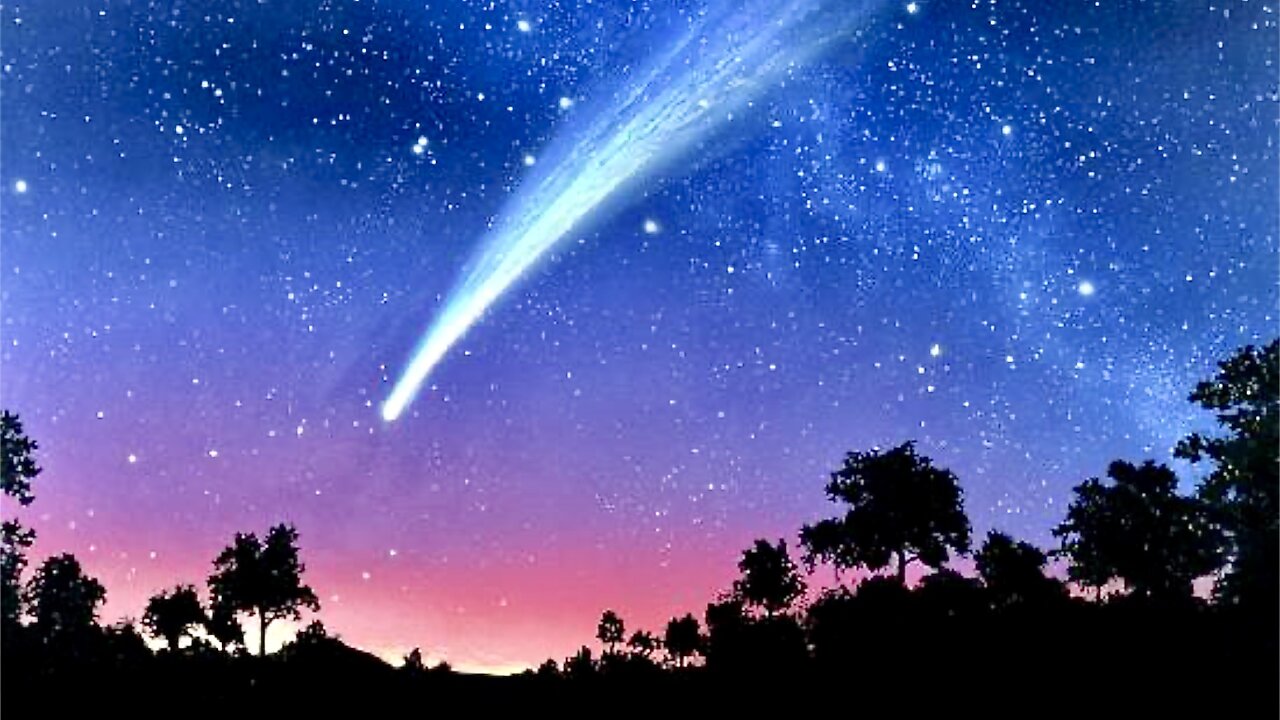Premium Only Content

Understanding Comets - Key To Human Survival & Exploration - Full Documentary
Comets are cosmic snowballs of frozen gases, rock and dust that orbit the Sun. When frozen, they are the size of a small town. When a comet's orbit brings it close to the Sun, it heats up and spews dust and gases into a giant glowing head larger than most planets. The dust and gases form a tail that stretches away from the Sun for millions of miles. There are likely billions of comets orbiting our Sun in the Kuiper Belt and even more distant Oort Cloud.
The current number of known comets is: 3,600
Unlike the other small bodies in the solar system, comets have been known since antiquity. There are Chinese records of Comet Halley going back to at least 240 BC. The famous Bayeux Tapestry, which commemorates the Norman Conquest of England in 1066, depicts an apparition of Comet Halley.
Comet History
As of 1995, 878 comets have been cataloged and their orbits at least roughly calculated. Of these 184 are periodic comets (orbital periods less than 200 years); some of the remainder are no doubt periodic as well, but their orbits have not been determined with sufficient accuracy to tell for sure.
How Humans Will Mine Asteroids and Comets
The idea of mining the planets, Moon, asteroids, and comets for their valuable mineral resources is not new. Science fiction writers began weaving tales of space mines, worked by crusty, usually antisocial old prospectors, in the 1930s. Invariably, these difficult, dirty, lonely operations in the far frontiers of the solar system resembled the mines in a more familiar frontier situation—the nineteenth-century American West. There were "decadent boom towns with grossly inflated prices," University of Arizona scientist John S. Lewis points out in his recent book about space mining. These stories also featured "boisterous miners in town for a few days to pick up supplies and go on a bender," along with "slick gamblers, painted women, and a variety of dubious establishments." 41
Not surprisingly, drunk miners, gamblers, and painted women were not part of the vision of the scientists who began discussing asteroid mining in the 1970s. The technological advances made during the U.S. space program had recently culminated in several successful manned Moon landings. And the experts became convinced that mining asteroids, and perhaps comets too, would actually be feasible in the near future.
Since that time, scientists working for both NASA and private companies have been doing detailed studies of space mining. The general consensus is that most of the technology needed to begin modest mining operations on an asteroid already exists. The main ingredient still missing is the commitment of a large amount of money by a government, corporation, or group of private investors. The experts all agree that it is only a matter of time before humans begin exploiting the tremendous wealth of resources waiting for them in the solar system.
#space
#science
#NASA
-
 1:34
1:34
Seeker Land
17 days agoHow To Escape A Parking Structure When You Lost Your Ticket
18 -
 17:41
17:41
MetatronGaming
2 days agoI should NOT Have taken the elevator...
6.06K1 -
 LIVE
LIVE
Lofi Girl
3 years agolofi hip hop radio 📚 - beats to relax/study to
579 watching -
 1:20:23
1:20:23
Man in America
14 hours agoHow Epstein Blackmail & FBI Cover-Ups Are Fracturing MAGA w/ Ivan Raiklin
196K34 -
 2:13:49
2:13:49
Inverted World Live
9 hours agoSolar Storms Ground 1000 Planes | Ep. 151
112K10 -
 2:54:08
2:54:08
TimcastIRL
9 hours agoJ6 Pipe Bomb Suspect ARRESTED, Worked With BLM, Aided Illegal Immigrants | Timcast IRL
260K134 -
 3:59:02
3:59:02
Alex Zedra
8 hours agoLIVE! Bo7 Warzone
40.7K1 -
 4:37:35
4:37:35
Drew Hernandez
1 day agoCANDACE OWENS / TPUSA STALEMATE & DC PIPE BOMBER CAPTURED?!
64.1K38 -
 12:31
12:31
Robbi On The Record
10 hours ago $5.40 earnedWhy Nothing Feels Real Anymore | The Science, Culture, and Spiritual War Behind the Fog
48.5K11 -
 18:42
18:42
Navy Media
10 hours agoHouthis ATTACK the Wrong U.S. Fighter Jet – Then THIS Happened…
50.7K44